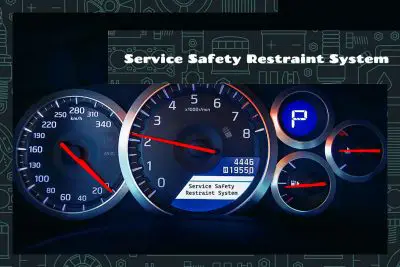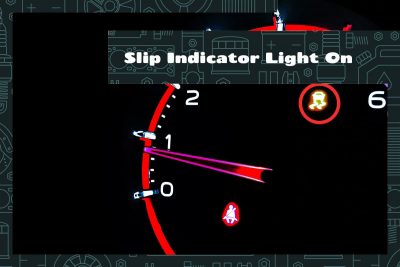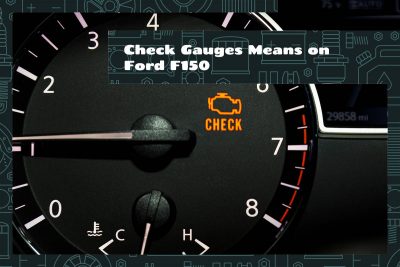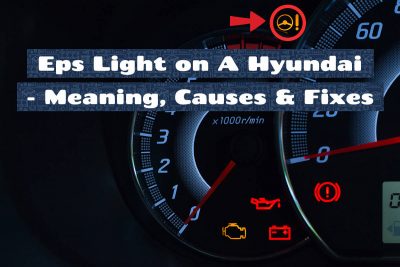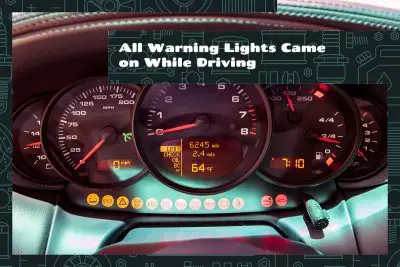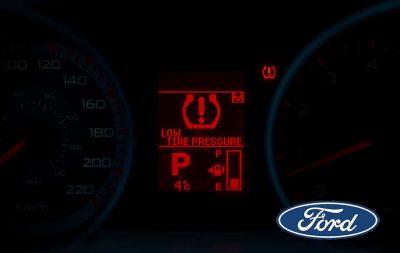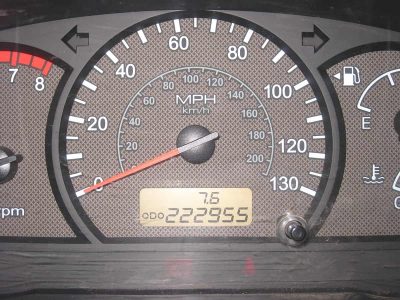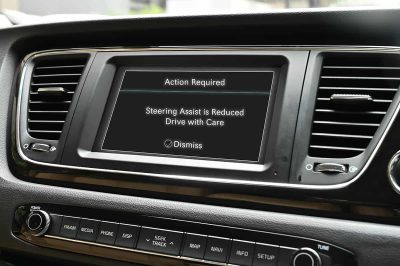Faults in the Service Safety Restraint System can arise from mechanical wear and tear, accidents, or electrical issues. Addressing these promptly ensures the system functions correctly. Solutions range from regular maintenance checks to seeking professional repairs.
The slip indicator is an icon resembling a car leaving wavy tracks. It represents the vehicle’s traction control system at work, signaling that the car is losing grip with the road and the system is trying to regain control.
The “Check Gauges” light on a Ford F-150 activates when one or more of the dashboard gauges—oil pressure, engine temperature, battery voltage, or fuel level—register outside the normal range.
The EPS light on a Hyundai indicates a problem with the Electronic Power Steering system. Symptoms may include difficulty in steering. Fixing the problem may involve checking electrical connections, alignment, or consulting a professional mechanic.
The triangle with an exclamation point on your car is a general warning sign. It often indicates a malfunction within the car’s systems or a safety issue. Common triggers for this symbol can be mechanical faults, electronic system errors, or specific environmental conditions.
Imagine you’re driving, enjoying your favorite tunes, and suddenly all the warning lights on your dashboard come to life. Dashboard warning lights are designed to inform you about your vehicle’s performance and potential issues, but when they all come on at once, it’s hard to know where to start.
In most cases, you can drive for about 30 to 60 minutes with the battery light on before the vehicle loses power. However, this time frame depends on the specific issue affecting the charging system.
If you’ve ever driven a car, you know the importance of keeping an eye on your gas gauge to avoid running out of fuel unexpectedly. However, if you notice your gas gauge needle spinning erratically, it can be a cause for concern. Luckily, you can try to reset the gas gauge needle before taking your car to a professional mechanic.
The TPMS warning indicator on your F-150 usually means one or more of the tires is under or overinflated. It could also flash due to improper tire or wheel settings, or the pressure sensor may be damaged.
An odometer has 6 digits with a 1/10th digit. The number reading displays how many miles the car has driven since it was released from the factory. There is also a trip odometer that counts how many miles you’ve driven since your last “trip.”
The warning “Steering Assist Is Reduced, Drive With Care” indicates that the vehicle’s steering assist system has been temporarily disabled or is not functioning properly. This may be due to a technical issue, a malfunction of the sensors or the control unit, or a limitation of the system in certain conditions, such as low tire pressure or a damaged steering column.
The gas light usually turns on when your gas tank has around 10 to 15% of gas left. Depending on the make and model of your car, you may be able to drive an additional 10 to 30 miles, but it depends on the gas tank capacity and average mileage per gallon.
